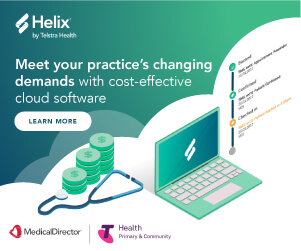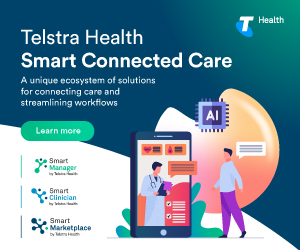True cloud versus the rest: Understanding digital healthcare software options
In the rapidly evolving world of healthcare technology, understanding the distinctions between cloud-based, cloud-hosted, and on-premise software solutions are crucial for healthcare professionals and decision-makers. Each of these solutions offers different levels of mobility and accessibility, key factors that influence the effectiveness and efficiency of healthcare delivery.
It’s also important to understand the distinction between the different ways that software can be made available over an internet connection. Whilst something may be available over the internet, it may not be truly fit for the cloud which can compromise security, performance and resilience if not configured appropriately.
Cloud-based solutions: Designed for the cloud
Cloud-based software is developed specifically for the cloud environment. This means these applications are inherently designed to maximise the benefits of cloud computing, such as scalability, flexibility, and universal accessibility. For healthcare professionals, this translates to the ability to access electronic medical/health records (EMRs/EHRs) and practice management systems (PMS) from anywhere, at any time, as long as there is internet access.

For instance, a cloud-based EHR system allows a clinician to review a patient’s records on a tablet during a home visit, or a healthcare manager to oversee operations remotely. These systems are typically subscription-based (Software as a Service or SaaS), offering regular updates and maintenance without the need for additional hardware investments.
MedicalDirector Helix is a prime example of a truly cloud-native EHR and PMS in one, combining the efficiency and flexibility of cloud technology with the comprehensive functionality that primary care professionals require.
Cloud-hosted solutions: Traditional software in the cloud
Cloud-hosted solutions involve hosting traditional software applications on cloud infrastructure. These include conventional applications initially designed for on-premise use, which are now hosted on the cloud to leverage advantages such as better resource allocation and remote accessibility.
For healthcare, cloud-hosted systems can provide more mobility than traditional on-premise setups. However, they may not offer the full range of benefits seen in cloud-based solutions, especially if the software wasn’t originally designed for the cloud. There can be limitations in terms of scalability and the need for occasional manual updates.
On-premise software with remote access
On-premise solutions are the traditional model where software is installed and runs on computers on the premises of the healthcare facility. These systems offer control, as the data is stored in-house and managed directly by the healthcare organisation’s IT staff or IT provider.

To provide mobility, these systems can be configured with remote access capabilities, often through Virtual Private Networks (VPNs) or other remote desktop solutions. While this setup allows healthcare workers and managers remote access to systems, it typically lacks the inherent flexibility and scalability of cloud solutions. Moreover, maintaining and updating on-premise systems can be more resource-intensive and sometimes require system downtime.

Hybrid solutions: Integrating cloud technology with on-premise systems
There are even innovative forms of cloud technology that can be integrated with on-premise software. A perfect illustration of this is the Telstra Health Smart range. These cloud-based apps and workflows are designed to launch directly from MedicalDirector Clinical and Pracsoft, blending the reliability of on-premise systems with the agility of cloud computing. This hybrid approach allows healthcare providers to enjoy the benefits of cloud technology, such as reduced server load and enhanced data processing efficiency, without completely abandoning the familiar on-premise infrastructure. By leveraging Telstra Health Smart, practices can access advanced features and workflows with ease, enhancing their service delivery without overburdening their existing systems.
Which solution is right for your healthcare practice?
The choice between cloud-based, cloud-hosted, and on-premise solutions with remote access depends on several factors:
- Scalability Needs: If your practice is growing or has variable demands, cloud-based solutions offer the best scalability.
- Access Requirements: For practitioners who need to access systems from various locations, cloud-based or cloud-hosted solutions offer greater flexibility.
- Security and Control: On-premise solutions offer control over data however are more vulnerable to security threats. Cloud-based and cloud-hosted solutions typically have high military grade security.
- Budget and Resources: Cloud-based solutions typically require less upfront investment but have ongoing costs, while on-premise solutions may require more significant initial investments in hardware and infrastructure.
The mobility of healthcare workers and managers is growing in importance as digital transformation of healthcare occurs. Understanding the nuances between different types of software solutions is key to making informed decisions that align with the specific needs and goals of a healthcare practice. Whether opting for the flexibility of cloud-based systems, the transitional approach of cloud-hosted solutions, or the traditional approach of on-premise software with remote access, the priority should be to enhance the quality of patient care and accessibility for clinicians.
Like this content? Subscribe to our email series on Healthcare in the Cloud.









